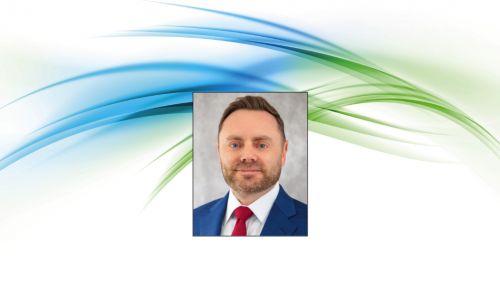
By Captain Paul E. Mawn USN (Ret.)
The Oily Beginning: WWI
Oil became a key factor in military might in the decade before World War I when the UK Royal Navy and US Navy shifted from coal to oil as a source of power. Other major navies soon emulated this transition. By 1939, all naval vessels in the world and 85% of merchant ships were burning oil for propulsion.
At the start of the 20th century, Russia was the world’s largest oil producer and responsible for over 50% of global crude oil production. However, Russian oil fields declined significantly right after the Russian Revolution in 1917. In August 1914 at the start of World War I, overseas oil imports for the UK and France came mostly from Iran, Mexico and the USA, but German crude oil imports came overland from Romania. However, the pre-war military logistics strategy of most countries was based on horses and other animals, and there was worldwide oil glut since petroleum had few uses beyond making kerosene for lighting. Furthermore, in the “War to End All Wars,” Henry Ford’s “Model T” was only in its sixth year of production.
Nevertheless, most of the key military innovations used were oil fired, such as: submarines, tanks, airplanes and motorized transport. As trucks replaced horses, aeroplanes were used initially for reconnaissance, which led to fighter planes as a counterforce as well as dropping a few bombs on the enemy while in the air. The British Army started the war with 250 planes, 26,000 automobiles and 827 motorcycles but had increased to 55,000 planes, 56,000 trucks, 23 automobiles and 34,000 motorcycles by the end of 1918. During World War I, 80% of all Allied petroleum consumption came from the US, with the US Navy playing a key role in protecting oil transports to Europe from being sunk by German U-boats.

The Deciding Factor of WWII
Unlike World War I, the major military inventions of World War II were not oil powered, e.g., radar, ballistic missiles and the atomic bomb. Additionally, the USA was energy self-sufficient (see figure 1) and the leading crude oil producer in the world in the 1940s and supplied more than 85% of all the oil used by the Allies during World War II (i.e. 6 billion barrels, which equaled the volume of all US oil produced from Drake’s initial well in 1859 up to and including 1941). In 1940, the entire Middle East only produced 204 MBD* of crude. The USA was also the largest consumer of petroleum at the start of World War II, i.e. 3,665 MBD compared with the USSR (501MBD), UK (208 MBD), Japan (192 MBD) and Germany (170 MBD). Without American oil, the Allies would not have won World War II. Both Germany and Japan were defeated, in part, because the Axis powers ran out of oil before we did, and because neither synthetic oil production by Germany nor oil field and plant looting by either country could sufficiently fill the gap.
Six months before the attack on Pearl Harbor, President Roosevelt established the Petroleum Industry Council for National Defense and appointed Ralph Davies, a Vice President of Standard of California (i.e. now Chevron), to lead this group, which forged an exemplary and successful working relationship between the government and the oil industry during World War II. For years, toluene had been a byproduct of coke production, but Standard Oil (i.e. now ExxonMobil) greatly expanded their production of toluene from crude oil. ExxonMobil refined an impressive 49% of toluene produced for the allies during the World War II, and another 15% came from Shell Oil. (Note: toluene is a key component of TNT used in explosives.) Despite Japan’s monopolistic control of 90% of the world’s natural rubber during World War II, the US allies never suffered from a shortage of rubber, thanks also to the manufacture of butadiene from crude oil by the US oil industry, in particular Standard Oil of NJ (i.e. now ExxonMobil), which led to development of synthetic rubber.
The US oil industry continued to push the technology envelope during World War II with several process enhancements such as hydrofining, which yielded a prodigious amount of gasoline but also provided the gateway to make 100 octane avgas. This provided allied fighter planes with a technological advantage over the Luftwaffe and Imperial Japanese aviation units and was especially critical in the “Battle of Britain” where the technologically inferior British Spitfire fighter planes had a distinct power thrust advantage over the more advanced and numerous German Messerschmitt planes.
The initial push for higher-octane gasoline was particularly driven in the late 1930s by the Vice President of Aviation Products at Shell Oil (US) named James Doolittle. This dynamic leader had maintained his aviation skills during World War I by joining the Army Air Corps Reserve. He was recalled to active duty in July 1940 as a major in the US Army Air Corps and later led the famous Tokyo Raid in 1942 for which he received the Medal of Honor. After the war, he led various key US government commissions and was later promoted to four-star general in the US Air Force Reserve before his death in 1973 at the age of 96.
One of the most significant and under-reported positive petroleum developments for the Allies during World War II was the design, construction and rapid completion of the “Big Inch” and the “Big Little Inch” pipelines, which moved crude or finished petroleum over 1,400 miles from Texas to New Jersey.
The 24-inch Big Inch Pipeline was started in August 1942 and completed 12 months later to carry crude oil to the Northeast refineries (see figure 2). The Big Little Inch pipeline was 20 inches in diameter and delivered finished petroleum products to various breakout product terminals along the way to New Jersey. When completed with no environmental roadblocks, both of these pipelines greatly reduced the number of German submarine attacks as evidenced by the following dramatic reduction in the number of tankers sunk by U-Boats: 1942 = 97, 1943 = 21, 1944 = 6, 1945 = 2. In addition, the demise of the initial U-boat turkey shoot was also aided by improvement in convoy tactics as well as Anti-Submarine Warfare technology and sailor sonar skills.
The Big Inch carried over 334 MBD of crude oil to the Northeast refineries and 240 MBD of finished product (i.e. gasoline, heating oil and diesel fuel) to the military and East Coast markets in the US. As a result of the above two pipeline marvels of transportation, the finished and crude petroleum shipped was the equivalent of almost 1,500 tanker voyages per year, which greatly reduced the number of targets available to the Nazi U-boat wolf packs.
In summary, access to and the distribution of petroleum was an underlying foundation for the Allied victory in World War II, in particular due to:
- Ample US hydrocarbon resources and refining capacity
- Close knit cooperation between the USA and the oil industry
- Significant expansion of oil based toluene production (i.e. a chief component of TNT for bombs)
- The discovery and manufacturing of synthetic rubber for tires since the raw material was accessible
- Oil refining technology upgrades for 100 octane avgas used in the Battle of Britain and elsewhere
- The rapid development and completion of the Big Inch and Big Little Inch oil pipelines.
From Then ‘Til Now
The next two major US combat engagements, the Korean and Vietnam Wars, were really not tied to petroleum security of supply. Though, some Vietnam War protestors incorrectly claimed that the US was really fighting to protect the oil reserves of the international oil industry in Vietnam, which only has less than 0.3% of the world’s proven oil, or 94% less than the proven oil in just North America.
However, the underlying foundation for Desert Storm on both sides was driven by the control of petroleum resources. In August 1990, Iraqi dictator Saddam Hussein had approximately 9% of the world proven oil reserve and literally stole another 6% of total international crude reserves by invading Kuwait. Had Hussein been intelligent, which fortunately was not the case, he could have easily whipped down the east coast of Saudi Arabia to pick up another 15% of world oil reserves and then continued to plunder another 6% of total oil reserves in the UAE, Oman and Qatar. If this had played out, a madman who was antagonistic to the US would have controlled more than 36% of the global proven crude oil reserves or 50% of the OPEC total oil proven reserves, which approaches the dangerous “red zone” known as the “Herfindahl Index” of market concentration. Thus, during Desert Strom, the US was in a sense engaging in international “trust busting” against a clear and present danger to the market security of the US and the world.
The current and probably lengthy worldwide war on Islamic fundamentalist terrorism is primarily related to a radical and distorted interpretation of Islam to convert through fiendish terror and conquest. However, the objective for ultimate global domination is to control the proven oil reserves in an Islamic Crescent Caliphate from Gibraltar to Indonesia, as shown in figure 3, which in turn would contain 54% of the world’s proven crude oil reserve or 75% of all of the oil reserves in OPEC.
Conflicted Tomorrows
In the hopefully unlikely activation of a future hot war with the Russian Federation, petroleum security of supply would not be a key issue, since Russia has 6.3% of the global crude oil proven reserves with a reserve to production ratio (i.e. R/P ratio) of 26 years but only 1.9% of the world’s population. As a frame of reference, the USA has 3% of the global crude oil proven reserves with an R/P ratio of 11 years and 4.3% of the world’s population.
However, petroleum availability would be a key driving force in a future (and perhaps likely) hot or cold war with China, which has 18% of the world population but only 1.5% of the global crude oil proven reserve with an R/P ratio of 18 years. As a result, China is now on the attack with a very aggressive global forward presence to address their growing gap for petroleum and other essential resources with a development strategy known as the “Belt and Road Initiative.” In effect, this strategy by the “Market Leninist” dictatorship of China is an attempt to re-create the ancient “Silk Road,” a network of commerce routes that connected the East and the West, named for the lucrative silk trade that started over 200 years before the birth of Christ.
The “Belt” in this program stands for the overland routes to China shown with black lines in figure 4, and the “Road” refers to the maritime corridors with a blue line in figure 4 through the South China Sea, the South Pacific Ocean, and the wider Indian Ocean area. Key objectives of the modern resurrection of these two “Silk Roads” are to enhance the Chinese economic power, regional hegemony, and petroleum security via infrastructure development and investments in Europe, Asia, Africa and Venezuela. The Chinese Navy already has established a forward deployment base in Djibouti on the Horn of Africa and is looking forward to using future port facilities that they are building in Pakistan. The maritime portion of the new “Silk Road” is particularly crucial since over 80% of world trade is carried over the oceans via ships, which for the most part are fueled by petroleum. In addition, over 99% of transcontinental communications are carried over sea cables in the ocean, and food transport by sea is expected to increase by an order of magnitude over the next decade.
The Chinese elite and key government officials do study history and view the USA as the gold standard for emulation as a world power. As a result, maritime leaders and strategists in China are considered to be serious followers of the late Captain Alfred Mahan (USN), who wrote The Influence of Sea Power upon History (1660-1787). Furthermore, China now views the Monroe Doctrine as a concept that should also equally apply to China for dominance over Southeast Asia.
Thus in the last several years, China has been significantly focusing on the rapid development of their Naval Forces to the point where they are about to have more deployable combat ships than the US Navy (i.e. 350 vs. 286), plus more auxiliary and reserve ships than the US (i.e. 700 vs. 200). However, for the near future, the US still will have a more powerful Navy than China for at least the following factors:
- Only 1 Chinese carrier vs. 11 US carriers
- No significant combat experience by the Chinese Navy
- Significantly fewer Chinese naval aviation assets (650 vs. 3,700 planes of the USN)
- Limited forward projection and “Blue Water” experience of the Chinese navy
- Inferior Chinese logistics train, especially for petroleum.
In summary relative to the link between “Oil & War,” current and future politicians and military strategists would be wise to remember the following words of Harvard graduate and philosophy professor George Santayana in his 1905 book, Life of Reason: “Those who cannot remember the past are condemned to repeat it.”
Captain Paul E. Mawn US Navy (ret.) is currently the president of Concord Consulting Group LLC. Previously, he held senior line management positions with Exxon and Hess Oil in marketing and distribution, as well as managed petroleum related projects with Arthur D. Little Inc. and as a partner at Mercer Management Consulting. Captain Mawn graduated cum laude in Geology from Harvard College with a subsequent MBA from Rutgers University and currently serves as Chairman of the Advocates for Harvard ROTC.






